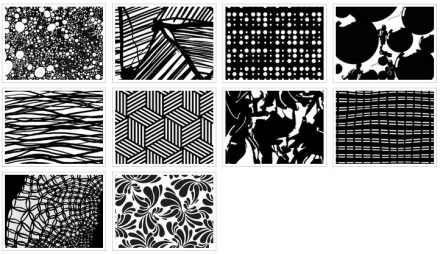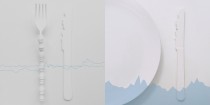I did promise to ‘throw open the doors to the judging process’, so in the spirit of making good manifesto promises, here is a lowdown on what went down when the judges met last Wednesday for the shortlisting.
We had just short of a hundred entries by the deadline on Sunday night, so by the time the four judges met, I’d already had a sneaky peek myself, in order to better introduce the projects to the other judges. And also because I could. What first struck me was the breadth of the entries – in subject matter, level of enquiry, and quality of execution. We had everything from first attempts at textile design to uber-slick perfection, taking inspiration from the mundane to the downright disturbing. Clearly, we needed coffee.

The panel was made up of Susie Wright (Channel 4), Alan Pert of Nord Architecture, Damien Smith of ISO and Paul Kerlaff (With Kerlaff). Once freshly recaffienated we did the first sort, which roughly translated into ‘maybe shortlist’ and ‘maybe not’. With the number of entries, this was the longest part of the process, and it stirred up some fascinating issues, some of which I never expected.
In some ways, the first thing that mattered was the first impression. We took care to read supporting comments or supplementary material, and in some cases this swayed us, but if the entry didn’t move the judges on a fundamental level from the word go then it wasn’t likely to be a winner.
I was worried to begin with that this ‘skin deep’ reading would be a lazy one, but it is perhaps the only way of really judging the patterns as a newcomer would; say, when a client walks into a restaurant with one of the screens. You only have that reaction once, and thereafter you know to some degree what to expect. This raises a question of longevity – over what timescale are these patterns for? Should we be looking for patterns that ‘grow’ on the observer, or those which give everything straight away?
Similarly, the judges discussed at length the relationship of effort to reward. With at least half of the judges being active educators, we were well versed in the language of marking, but this was not an academic exercise. Should the beauty of the image be rewarded, even if the entrant had done little to answer the brief? And if the image needed extensive editing to become a successful Shadow Screen, should this be detrimental to the chances of that entry?
There are two schools of thought on this – one that says that the process of refinement would knock the rough edges off any design that required it – and the other that asks for the brief to be answered, with a corresponding dismissal of those who don’t step up to the mark. Personally, I am hoping that the result of the Shadow Screen opportunity is one or more working relationships, and all relationships require input from both parties, so I like to see a bit of graft. Damien was more of the thinking that the quality of the image was what mattered, with any variation from the brief a secondary issue.
In the process of whittling down the entries to the final ten – which happened unanimously – what struck me was that although the brief asked for certain things, we got entries which offered less in some areas, and much more than hoped for in others. The shortlist therefore reflected not so much the top ten in an objective sense, but more a spectrum of what was offered to us. Each of the shortlisted entries is arguably the best on it’s own terms – we could easily pick out the most striking, the conceptually strongest, the most commercial, the one we could live with every day. But these were different patterns.
This diversity reflects the potentially diverse role of the design. What is it there for? To attract coverage? To make a stunning image? To complement a palette of materials for an interior? Should a Shadow Screen hog the limelight in a handful of interiors, or improve hundreds in a subtle way? How does intellectual stimulation fare when pitted against pure visual beauty?
I’d love to have these questions answered, but I suspect that will only happen over time, through the input of many people. If you would like to comment, please reply below, or comment on the Censta Facebook page here:














Comments